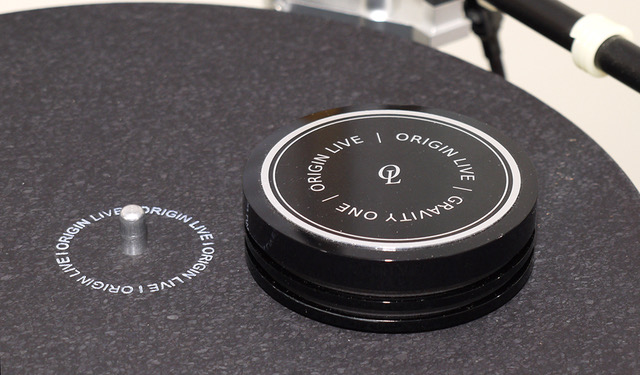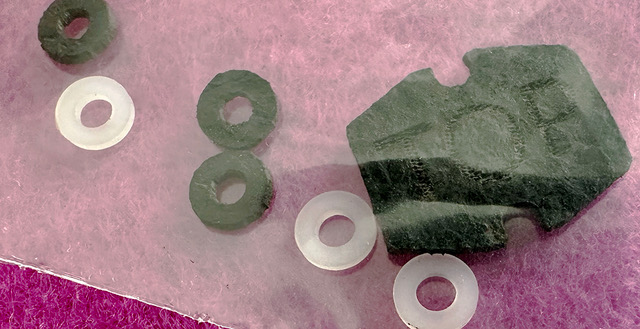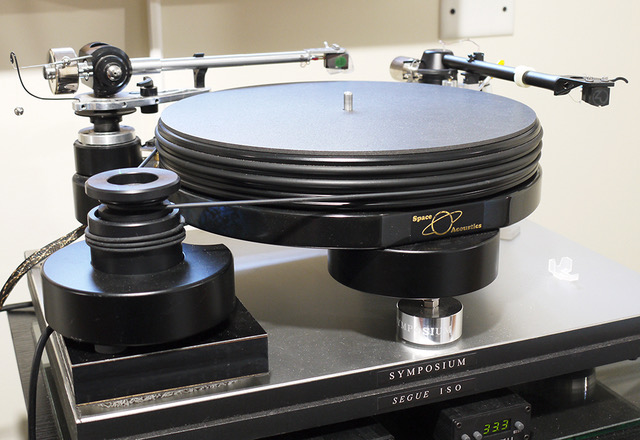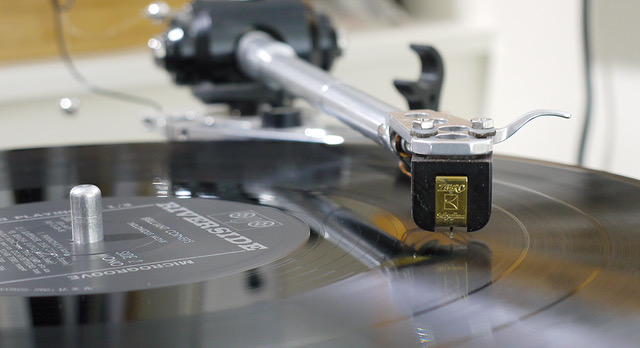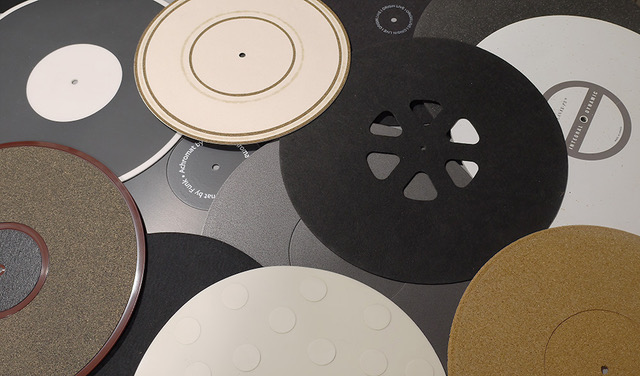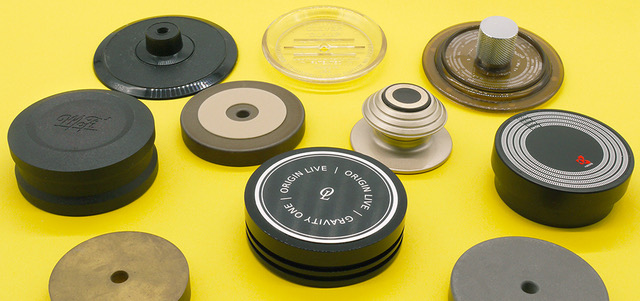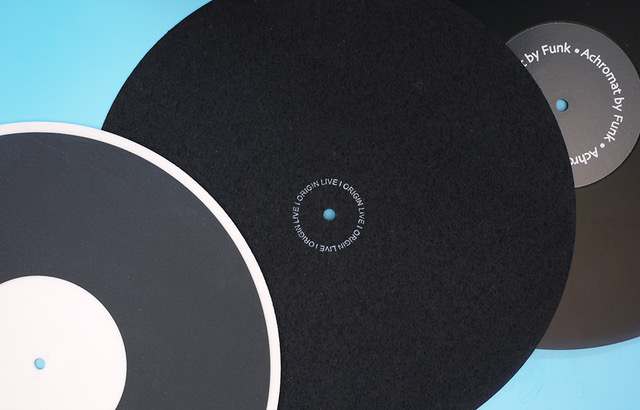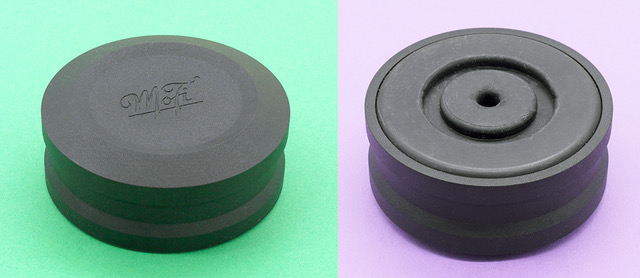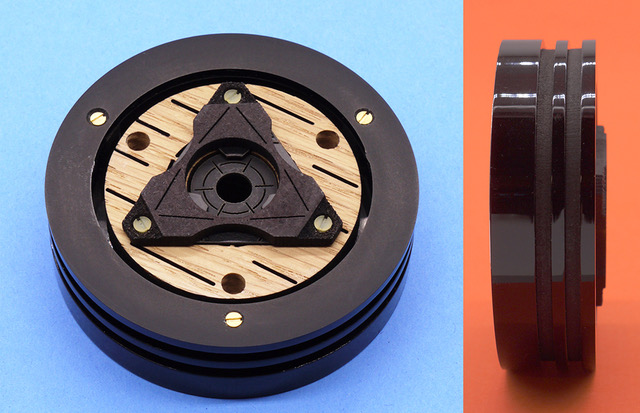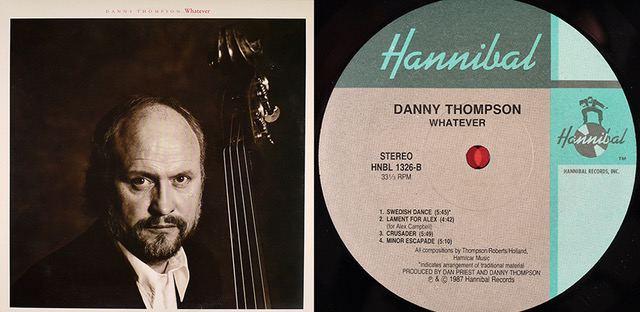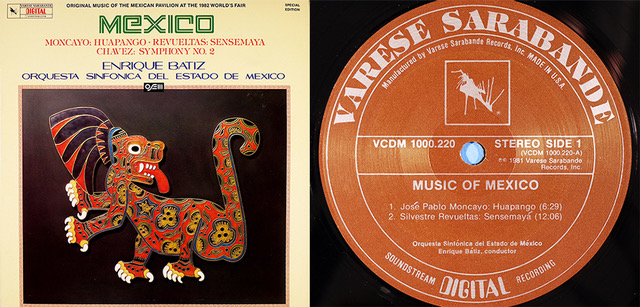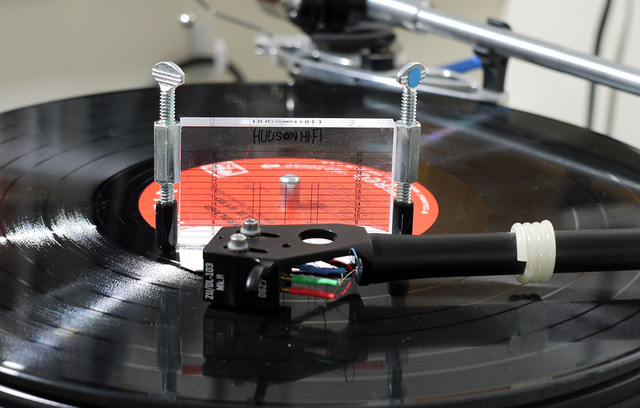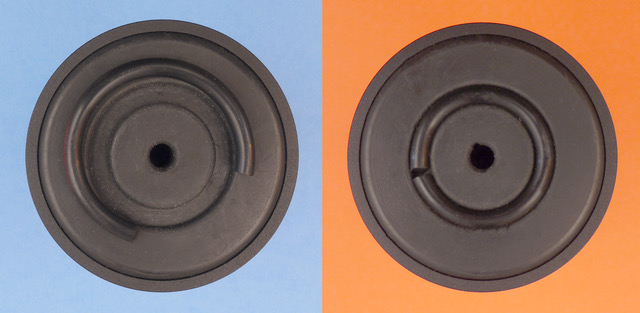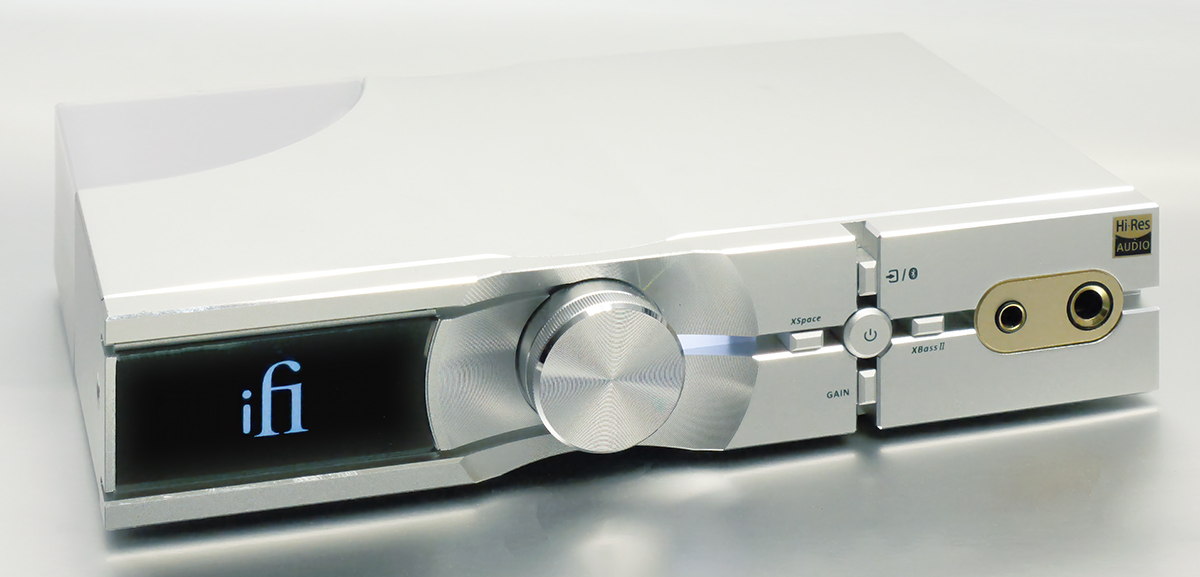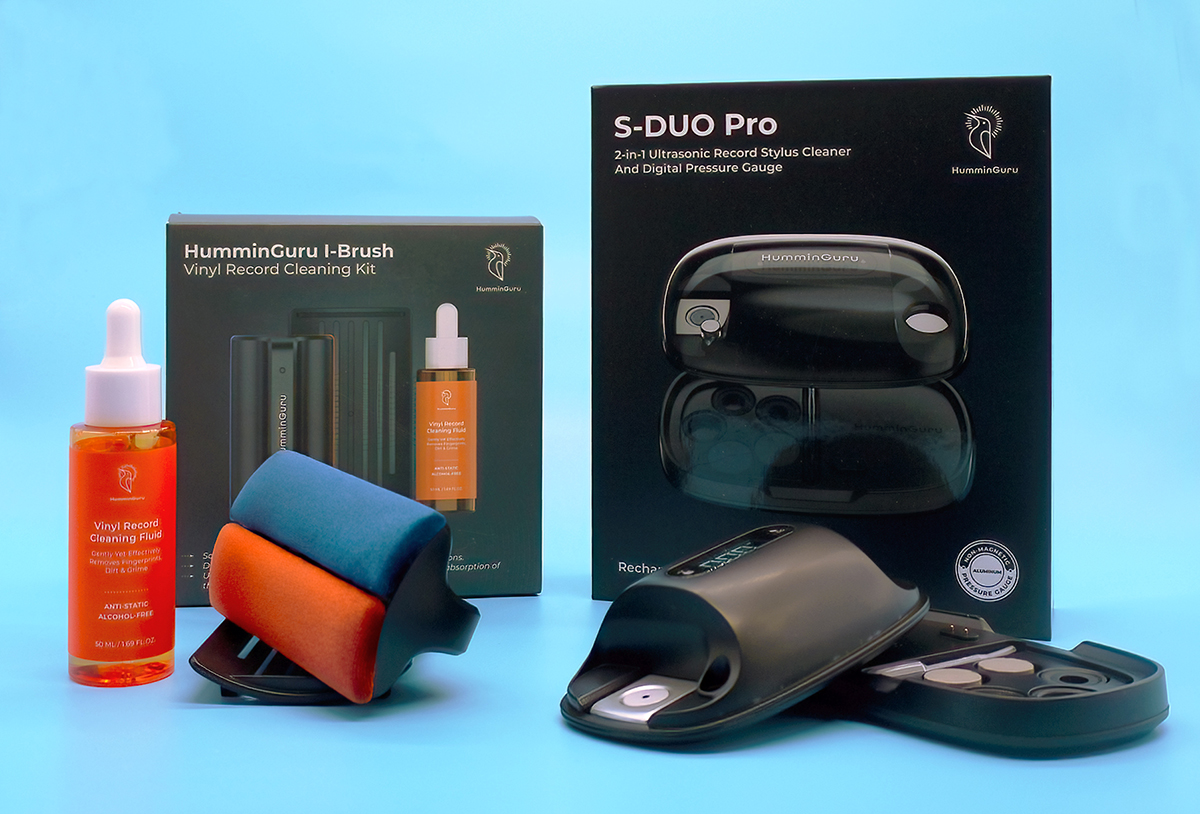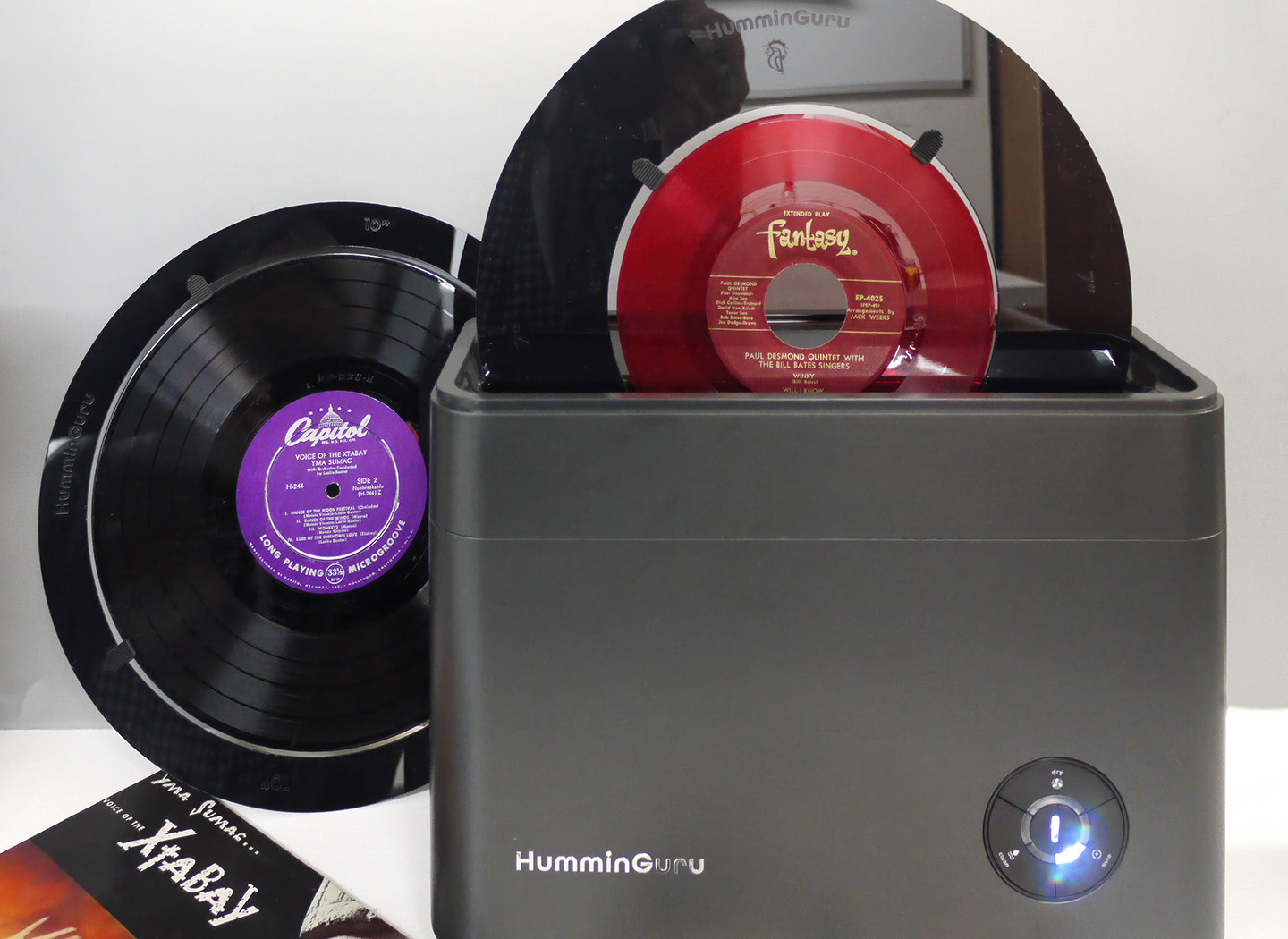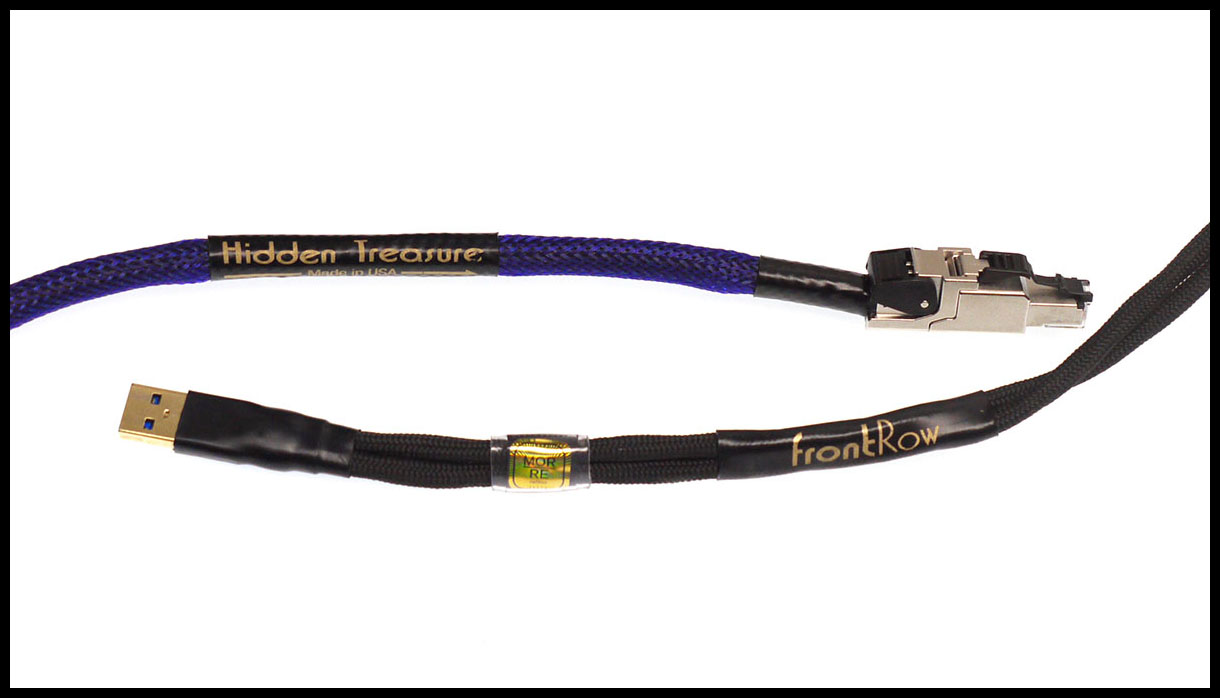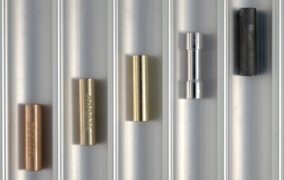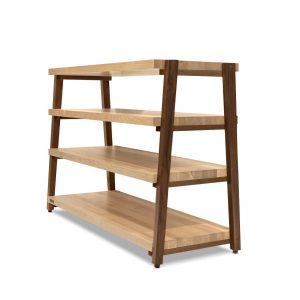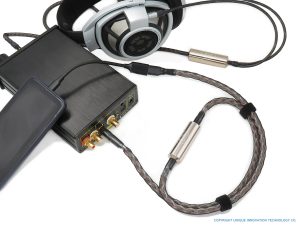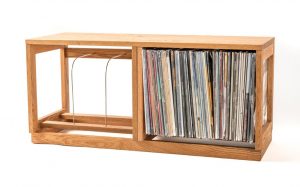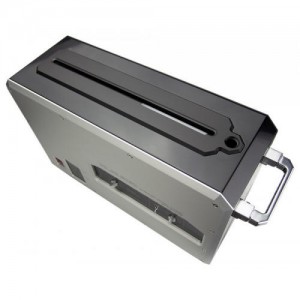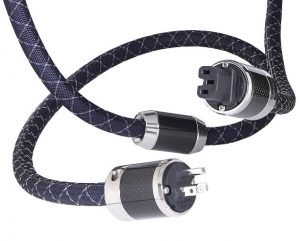About a year ago I put together a selection of analog tweaks under $50 (HERE)—a mix of DIY, off-label use of non-audio thingamajigs, and commercial offerings. Among the latter was Origin Live's cool little Cartridge Enabler. I described it as a gateway drug for the firm's spindle weight and platter mat (which uses the same material as the headshell isolator). I planned to write them up in short order, but…as John Lennon reminded us, life is what happens when you are busy making other plans.
So here I finally am, having had to mothball my system for a couple of lengthy and messy house projects, and having made my apologies to the good folks at Origin Live, to take a deep dive into their approach to optimize the playing of records.
One of the things that makes analog audio different from digital is the role of mechanical processes—the mastering lathe, the physical pressing of the vinyl disc, and the playback stylus tracking the groove. That phono cartridge seemingly gliding along the grooves is just a platform supporting a diamond on the end of a lever that is forced by groove modulations to move magnets or coils in order to generate a tiny electric signal we amplify to hear. Playing LPs is more a matter of mechanics—and Newton's Three Laws—than electronics. On a minuscule scale perhaps, but to an innocent little wiggle in the groove, an oncoming stylus looks a lot like that boulder chasing down Indiana Jones.
Being mechanical, the cartridge/groove interaction also generates self-noise that you can hear without amplification. Play any LP with the volume turned all the way down, and listen to the "needle chatter." When I was a kid we'd stick a thumbtack through the bottom of a Dixie cup and reinvent the acoustic gramophone. But don't try that at home, it's just a clue to how strongly mechanical stylus vibrations propagate through whatever is attached to it. Right back into the disc itself, and up into the cartridge body, then to the head shell and tonearm—all points of contact that can reflect vibrations back to the stylus, and add their own resonant signatures in mechanical feedback loops that can blur or color the original signal.
Every cartridge, tonearm, and turntable designer grapples with the problem of minimizing these and other unwanted mechanical vibrations—the motor, bearings, suspension, warps, etc. Materials science, precision machining, rigidity, damping, isolation technology—they all matter. Every cartridge/tonearm/turntable manufacturer also seems to offer a range of ever more costly models promising to better allow the stylus to accomplish its one simple task. The UK's Origin Live certainly does; my Illustrious tonearm has been updated several times over the years, and it's now one of their less expensive models. But Origin Live is unusual in offering affordable accessories that can be used alone or together with virtually any brand of cartridge, tonearm, or turntable.
Their Cartridge Enabler is a 1mm thin pre-cut piece of some flexible composite material to be installed between cartridge and head shell to minimize any vibrations passing from cartridge to the head shell/tonearm and vise-versa. There are a few other high-tech cartridge isolators from other vendors, but at many times the price (£27/$34 at the current exchange rate).
One obvious your mileage may vary problem reviewing such a thing is that cartridge bodies are made of various woods, plastics, stones, or metals. They are attached to head shells and tonearms also made of diverse materials—and all of these can reflect or resonate with the stylus generated vibrations. For that matter, even the fixing bolts and nuts can be stainless, brass, aluminum, or nylon and sound different; Origin Live cannily includes tiny washers of both the Enabler's damping material and nylon (three each for the Linn/Rega crowd), and cautions users not over-tighten to avoid screwing up the interface.
Realistically though, directly determining the effect of the Cartridge Enabler in a given setup is a challenge. It takes several minutes to install or remove the Enabler and check the setup (you do need to adjust VTF and VTA a bit), so instant A/B comparisons are not feasible. And of course the specific cartridge and head shell involved has a major influence.
My main turntable is a venerable but modified Nottingham Analogue Spacedeck (HERE), which supports two arms. For this review, the aforementioned Origin Live Illustrious tonearm sits at the back, with a wood-body Myajima Zero mono cartridge, and an Audio Origami UniArm unipivot is to the right, with a Zu Audio modified (stock plastic housing replaced with a metal shroud) Denon DL-103. I think of the UniArm as an "Occam's Razor" design—as simple as possible, with only a dab of silicone in the unipivot to keep things civilized. Since discontinued, but I own the very sample Art Dudley reviewed, and favorably compared to the similarly minimal Naim ARO back in 2017.
The Myajima sounds terrific on the Illustrious, but I was curious if the Enabler would remove any faux "richness" that might be contributed by the wood body. Also, Origin Live suggests that the Enabler allows differential torquing of the bolts to provide some degree of azimuth correction, an adjustment otherwise not easily effected on the arm.
The Zu Denon also works great in the UniArm, but I was again curious if Zu's metal housing was contributing anything "extra" to the reproduction (it does sound "livelier" than my older stock 103). A conical Denon stylus is also less fussy about setup than the line-contact Lyra Kleos stylus in my other UniArm wand, and I knew I'd be changing VTA a lot.
A mono cartridge like the Miyajima tracing a mono recording only picks up horizontal groove modulations, ignoring lots of surface noise that a stereo cartridge, which also reads vertical information can emphasize. While I could perceive enhanced tonal definition in clean reissues with the Enabler, it was some prized VG originals that revealed a reduced "ringing" on scratches and pops, especially noticeable when running the 6 ohm Zero into the clean and fast Sutherland Little Loco current mode phono stage.
The Enabler also clearly mitigates a "something not quite right" from the metal on metal Zu Denon/UniArm interface without diminishing the DL-103's classic "musical" character, or its lively presentation-plenty of PRaT remained—the Enabled Zu just sounds a bit cleaner and more detailed.
In sum, the Origin Live Cartridge Enabler improved the performance of two of my favorite but quite different cartridges, and in different ways. It is such an affordable bit of tweak that it is easily recommendable for just about any analog rig. I left it installed in the Audio Origami arm as I continued to play with the mats and weights.
Where our next challenge is old Isaac's Third Law: the force of those stylus movements generated while careening along the groove walls is equally and oppositely sent back into the vinyl LP itself, and transferred to and (perhaps) reflected back by the metal, acrylic, glass, ceramic or whatever platter. Adding the need to suppress platter borne motor or bearing noise as well helps explain the proliferation of platter mats thick and thin, hard and soft, rubber, cork, graphite, felt, silicone, plastic, paper, leather, metal, or mystery meat. I have acquired a bunch over the years, and they all sound different.
The Origin Live platter mat (£46, currently $58) is apparently manufactured from the same 1mm thin "gaskety" material as the Cartridge Enabler, and both may have some surface treatment—the Enabler is marked "top" on one side, the mat is smoother and has a discrete label topside. It is 295mm in diameter, and weighs under 2 oz, so should work on most turntables, and it's a shoe-in drop-in for Regas or other tables with felt mats. Yes, turntable platters come in different diameters, and some have outer lips, but this material is easily trimmed.
Also, some platters are flat from edge to spindle (like my Rega Planar 3's glass platter), while others have a machined recess in the "label area" (like my Spacedeck), should one prefer placing/clamping the LP directly on it. This recess is because many LPs have raised label "islands" (although others don't). Similarly, some platter mats have a label recess, others not. In general, the grooved section of an LP is slightly recessed below the plane of the label and outer lip, and some mats are thicker in the groove area to maximize contact there. All this affects the areas of contact and/or cavities between platter, mat, and disc. Of course, anyone who has pinched a cymbal knows you don't have to damp the entire thing to stop its vibration. Still, such factors help explain why different mats sound different on various platters.
It is also to optimize the effectiveness of the platter or mat to LP interface that the variety of record clamps and weights exist, and I also have a bunch of them. Some turntables come with bespoke screw-down clamps, but there are also third party "clutch and tighten" spindle clamps. They can work well for flattening warped discs with a washer around the spindle under the LP to force the outer rim down.
Record weights also come in many configurations—after all, you can DIY a decent one with a hockey puck and a power drill. Most depend on simple mass to damp disc vibrations, but really heavy weights can stress platter bearings or suspended chassis designs like the iconic Linn Sondek. Record weight materials can also introduce their own resonances—brass sounding different from stainless or aluminum—and do be prepared to open your wallet if you want the benefit of rare and exotic African Mpingo or other hardwoods.
The 37mm thick and heavy metal Spacedeck platter has two peripheral damping bands, and doesn't ring much at all. But an add-on 25mm thick graphite "Heavy Kit" is still offered as an upgrade (and is standard on Nottingham Analogue's more expensive models). My cheapo hack from back when was to add a Boston-Audio 3mm graphite mat (HERE)—label recess down in order to use an additional mat atop the flat side. The result is now a really inert platter.
For comparison platter mats I chose two popular ones of 3mm thickness I had on hand: the very soft Herbie's Way Excellent II for $72.50 (HERE) and the Funk Firm's rigid Achromat for $115 (HERE).
The Achromat has been my "daily driver" mat for several years, so if everything sounded normal with it on the Spacedeck, that's either bias or baseline here. It is light but stiff, with inner micro-tubes doing the damping. Label recess on one side, flat on the other. I think of it as dynamic, basically neutral, an all-rounder getting the "big picture right." It's also the easiest mat to keep free of dust.
The Herbie's Way Excellent II is composed of a soft open foam bottom layer (white) topped with a flexible and slightly grippy grey silicone "doughnut" under the groove area for maximum contact. It sounds quite different from the Funk, and it's one of my "first alternative" options, as it livens up a lot of overly compressed LPs as well as dim early recordings, and works particularly well with the many non-RIAA EQ options on my Puffin phono stage (HERE).
For comparison with the Origin Live Gravity One weight, I used the massive 13 oz Mobile Fidelity SuperHeavyWeight for $199 (HERE). It was developed in conjunction with Harmonic Resolution Systems, best known for their high-end equipment racks and anti-vibration isolation systems. The aluminum body functions to mass-load circular pads of a proprietary HRS polymer (there's also an 18 oz. "Champion" version for $399).
It was a friend's parlor trick of slipping one of the MoFi's over the spindle mid-play that had piqued my interest in playback mechanics: surface noise diminished, but so did some high frequency energy, extension and air—actually a plus in his system, which I generally find on the bright and bass-shy side. Still, it was remarkable how much the reproduction changed with the weight off/on/off/on/off the label. The inescapable take-home was that most of us listen to LPs with a surprising amount of unmanaged "needle chatter" energy overlaying the music, and so I bought one.
The Origin Live Gravity One at £210, $264 at current exchange (HERE), takes a very different approach: it weighs but 2.5 oz. The company is a bit coy as to its operating principle, but turning one over reveals the "works" are very loosely held in place by (count 'em) three brass and six nylon bolts. Shake it and it rattles; the wood disc is free to move a bit within the outer shell, the (3-D printed?) scalloped triangle can shift against the wood, and the oversized round spindle hole plate around both. All three parts have resonance cancelling slots.
Viewed from the side, one sees that only the bottom triangle actually makes contact with the disc, and that the outer shell is actually a stack of three hard plastic rings separated by two smaller 1/8" rings that appear to be slightly compliant foam, and a metal top plate that bears the label, all held together by the three brass screws. Despite its conventional outward appearance, the Gravity One is a surprisingly complex mechanical vibration sink.
OK, so it's time to listen to a few LPs, but what to choose? I began with two fairly unheralded and decades old LPs which I have used for evaluating equipment in the past, so have multiple copies. Both feature "dances" in the outer bands, with repeated motifs that help zero in on specific instruments or characteristics. I listen for tone and textures, sound staging and "hall sound," micro/macro dynamics and transients. There is also the matter of how well ticks, pops, and continuous "vinyl rush" surface noise are handled. That's right: no female vocals, pianos, processed rock, or premium reissues, as each inherently sounds unique; work before play is the reviewer's lot.
Danny Thompson's Whatever (1987 US Hannibal Masterdisk pressing) was his first solo LP after his tenure with Pentangle. No indication as to analog/digital, and sometimes over-dubbed, but overall a pretty straightforward recording; pan-potted imaging and studio reverb added. It features his double bass, with sidemen on winds and guitars,"Swedish Dance" has repeated top to bottom bass runs perfect to evaluate bass to midrange balance and inner definition, plus subtle finger slides and slaps. The guitar often doubles the bass line, and is sometimes almost buried in the mix. Towards the end things get complex before a UFO up-sweep that makes the reverb/ambience obvious. Frankly, it can also be a tedious and boring cut, and thus a fine example for how tone, touch, and timbre contribute to listener engagement…or don't, depending on playback parameters.
Jose Pablo Moncayo's "Huapango" is from Mexico, a 1981 Brian Culverhouse recording for Varese Sarabande, US pressing on Teldec "high resolution" vinyl. Yes, digital, but via the 50kHz sampling Soundstream system that preceded Red Book 44.1kHz (vide Telarc LPs). A large ensemble soundstage is continuous, so instrumental separation/imaging is important. Huapango is a Mexican dance, orchestrated to highlight trumpet, trombone, flute, piccolo, harp, drums, etc. above a full orchestra, with strings running from soft pizzicato to triple forte top register exuberance. And yes, the dreaded digital strings thing lurks in the grooves.
I adjusted the VTA for each trial using my modified Hudson HiFi acrylic grid described in the analog tweaks piece. Volume level remained constant throughout, and I dry brushed the stylus for every play. Of course, all observations are specific to my personal system, including my ears.
Some listeners (and manufacturers) prefer placing the LP directly on the platter—no mat or weight—so I started by doing that, first on the Spacedeck's metal platter, then with the graphite topper. On my system both yielded vivid but almost coarse renditions, the latter better balanced, but both lacking finesse. The high strings sounded like the cartridge was mis-tracking a bit, the orchestra was a muddle, and Thompson's bass lacked definition. Adding the MoFi weight solidified the bass significantly, and toned down the strident strings, especially with the bare metal platter. The Origin Live weight made less of a difference but clarified the instrumental interplay and improved micro-dynamics, especially on the graphite.
After resetting the VTA, I replayed the selections using the Herbie's Way Excellent II mat atop the graphite, and immediately realized the cartridge was not mis-tracking at all, the high strings were now cleanly reproduced. However, the overall balance was tilted towards the treble, the bass rolled off, and surface noise was more prominent, albeit clean and crisp. The piccolo and harp were obvious beneficiaries in the Moncayo, likewise the guitar and winds against Thompson's bass. Adding the MoFi weight rebalanced the bass, but at some cost to the upper harmonic definition. Using the Gravity One brought a more natural balance, and better definition throughout, while somehow making transient surface noise less obvious.
Switching to the Funk Achromat alone revealed a balance that favored the mid-range, immediately apparent in the brass instrument harmonics and the guitar's tone. The double bass runs were more characterful and the orchestra had more body and life, although the high strings in "Huapango" were still too forward in the familiar digital death spiral. Dynamics and ambience retrieval were excellent. Adding the MoFi enhanced the bottom octaves but the high strings again lost defintion. On the other hand, the Origin Live weight improved imaging specificity, and nicely tamed the high strings, revealing texture and upper harmonics for the first time
Finally, lowering the VTA for the thin Origin Live mat used alone provided a more neutral presentation top to bottom, everything more "organized" than with the disc directly on a platter, although the high strings seemed not quite as clean as with the HWE II used alone. Adding the MoFi weight again tilted the balance towards the bass while rolling off harmonics and high frequency transients.
Combining the Origin Live mat with the Gravity One weight (and the Cartridge Enabler of course) revealed a synergy and clarity that was striking. Instrumental tone, imaging, micro-dynamics, and orchestral textures all excellent, and surface noise well suppressed. The musicians were more present in the 3-D recorded space, and the playing somehow more alive and expressive, I take back what I said about "Swedish Dance" being boring. Both test pieces were first cuts on the side, but I happily ended up playing each side through to the end. That experience continued as I cued up disc after disc, mono and stereo, vintage and audiophile reissues just because the system sounded so good.
I have to emphasize here that one's conclusions might well be different in other set-ups, but like many audiophiles, my system has no "tone controls." So Herbie's Way Excellent II remains my easy solution to dim recordings. As noted, I had balanced my playback system around the Funk Achromat, and value its dynamic presentation on many recordings. And yet the Gravity One weight improved both of them.
But the MoFi SuperHeavyWeight? I preferred it with an LP on the bare platter, but not with any of the mats. No mention or prohibition of platter mats at MusicDirect.com, and I believe their own turntables don't come with mats. The consistent roll-off of high frequencies and air when this weight was used with three mats demonstrates a couple of things. First, how much mechanical energy is introduced into the vinyl during playback, and how effective the thing is at dissipating it. But when used with mats that also reduce that energy, cranking that energy dissipation up (down?) to minus 11 may be overkill.
There's no official mechanism to "tune" the weight to optimize it for different turntables (and I have several), but being mechanical, it can easily be hacked by reducing the contact area. Simply put a washer over the spindle so that only the weight's central pad is absorbing disc vibrations, and voila! Three thumbtacks in the outer ring also work, but I wanted an easily reversible solution. At the hardware store I got a slightly oversized 3/16" "O"-ring for a buck; snipped to size, it fits snuggly and pops right out. I find my "tuneable" MoFi weight very effective on over bright pressings (like some DMMs and early digital LPs), for dealing with minor dish warps, and even as a kind of loudness control for late night listening.
Of course Mobile Fidelity doesn't make platter mats, nor do Funk or Herbie's make audiophile record weights. Origin Live's approach seems unique in managing analog playback issues at all three mechanical interfaces: platter to disc, stylus/groove generated internal disc energy, and cartridge to head shell vibration transfer and reflection. This is a systems approach, and the resultant synergy was obvious. Across a wide range of material the trio consistently introduced an increased level of engagement and pure pleasure to my LP listening. Audiophiles can spend thousands on resonance control for electronics while the mechanical issues central to analog playback are too easily overlooked. That gateway drug did it's job-I'm hooked, and all three accessories are highly addictive.
Origin Live has a few dealers in North America who may stock these products, but one can easily order any or all of them direct from the Origin Live website-they are a lot cheaper than most audio upgrades, and light enough that shipping all three would not be a deal breaker. Highly recommended!
Origin Live




